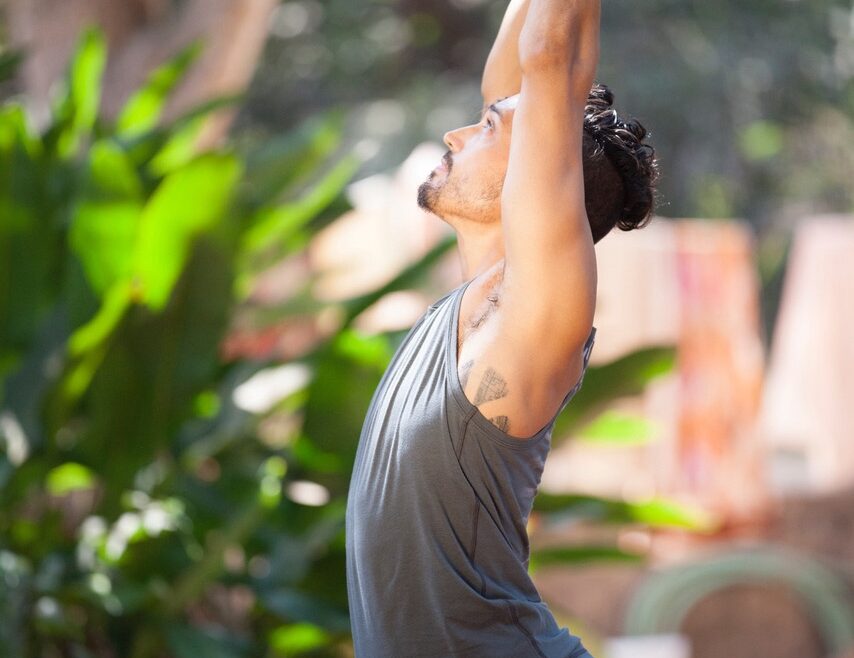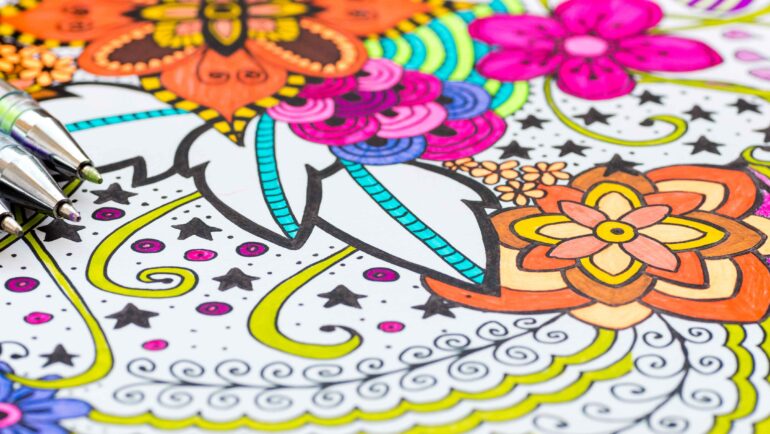Today, I achieve the impossible. I am whole, healthy and vibrant and capable of amazing things. I bring all my power and care to my practice. As I experience the impossible, I honour my heart and soul which have enabled this. I honour my body, and know that for me, making the amazing possible will be different for me and others. I let go of my doubts and fears, and beyond them, find a more amazing me
I wrote this affirmation for a yoga workshop on the Warrior asanas – Virabhadrasana 1, 2 and 3. There are more modifications, but these are the essential three.
Seems very anti-ahimsa to name yoga poses after a warrior. Aren’t us yogis meant to be non-aggressive, spiritual dream heads?
Yoga is full of these contradictions – one of the most revered of yoga texts, the Bhagavad-Gita, is the dialog between two famous and feared warriors, Krishna and Arjuna, set on a battlefield between two great armies spoiling for a fight.
The story of this set of asanas is the journey we all travel to become a ‘spiritual warrior’, who bravely does battle with the universal enemy, self-ignorance (avidya), the ultimate source of all universal suffering. To become at peace with ourselves and the world.
When yoga teachers tell you that these asanas are heart openers, it is not just about the physical alignment, power and stretch…
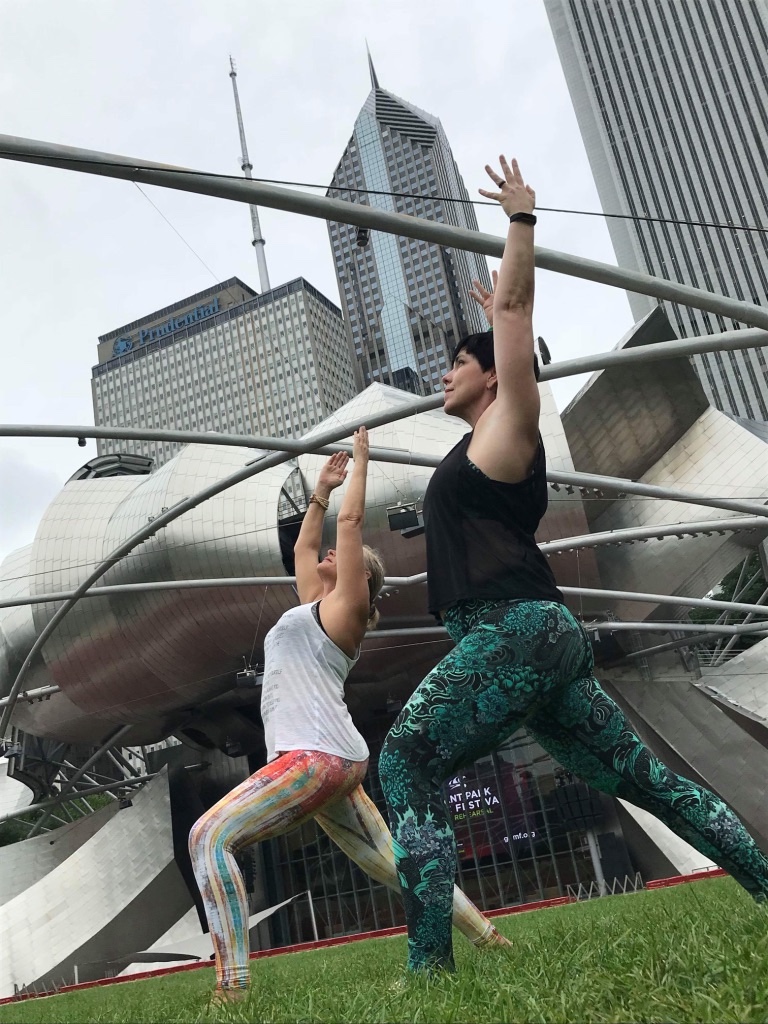
THE STORY OF THE WARRIORS
The powerful priest Daksha threw a yagna to end all yagnas (ritual sacrifice). He invited everyone – except his youngest daughter Sati. Who was married to Lord Shiva, whom Daksha would have cut his own nose off rather than acknowledge (even though Shiva was supreme ruler of the universe). Shiva was a bit of a groover, with long black curly hair, big gold earrings and kohl around his eyes – not at all suitable for a priest’s daughter.
Sati found out about the party and suggested to Shiva they go anyway. Shiva, not wanting to incite her father’s anger anymore than he had already, asked, “Why go, where we are not invited?” Sati, hurt by both her husband’s response and her father’s refusal to acknowledge her marriage, decided to go on her own to the yagna.
Well, you don’t have to be a fortune teller to guess what happened next. Sati and her father start arguing, which entertains the guests mightily. Fuelled by public support, her father taunts Sati further.
Sati remains silent, more and more miserable, angrier and angrier. She is tired of arguing with her father, defending her husband. That her father, the one man upon whom a daughter should always be able to rely, could do this. She made an internal resolve to relinquish all family ties. Finally she speaks, “Since you have given me this body I no longer wish to be associated with it.”
Walking past her father, Sati sits in a meditative seat on the ground. Closing her eyes, Sati practiced her yogic exercises and began to increase her own inner fire until her body burst into flames.
When Shiva got word of Sati’s death, he was devastated, furious, vengeful. He cut off some of his beautiful hair, turned it into his fiercest warrior. And fierce and scary he was – a thousand heads, eyes and feet, wielding a thousand clubs, wearing a tiger skin (don’t ask how it fitted, I have no idea).
Shiva named this warrior, Virabhadra. Vira (hero) + Bhadra (friend). He ordered Virabhadra to go to the yagna, destroy Daksha and all guests assembled.
And this is where the warrior poses began.
The Warrior asanas explained
1. Virabhadrasana 1
Virabhadra comes up from the earth with his clubs above his head (this is our hands above our head), surprising the guests and Daksha.
To break the earth, you must have a strong back and core, your feet about 3-4 feet apart. Imagine your feet on small but separate train tracks, the weight of your body evenly distributed over both your feet. You should be able to turn your hips to face the front foot, as square and as straight as you can. Match your shoulders to this stand.
As you breathe in, think core, and stretch the arms up further, until they are by your ears, but shoulders away from the ears, back straight, long and strong.
As you exhale, feel the strength emanate from your core, travel up your chest and rest in your gaze. You are about to wage war on those who have hurt your beloveds.
You are alerting the world to your presence.

2. Virabhadrasana 2
Virabhadra faces the guests with a long sword, the hindu equivalent of ‘en guarde’. The guests and Daksha know they are about to die a horrible death. He is looking straight at them.
Feet are 3-4 feet apart, this time your front foot heel is in line with the arch of your back foot. Hips open, and extend the arms horizontally to your shoulders, all five fingers on each super straight. Your arms and hands are now one long sword. Look out over your front hand.
As you inhale, roll the shoulders back, stretch both arms out at the same time. As you exhale, bring your focus back to beyond the extended front hand, and settle into the position. Back leg is long and strong.
You are challenging mere followers, people who say cruel things with no thought of consequence, those people who have no strength to speak up when there is bullying or harassment. You are challenging others and maybe even yourself.
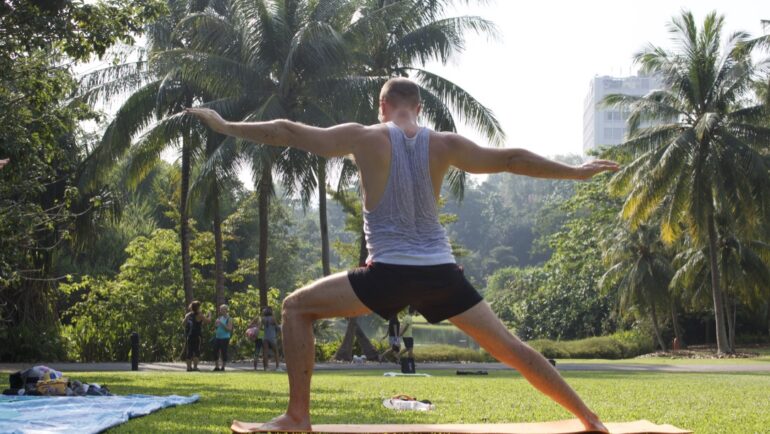
3. Virabhadrasana 3
Virabhadra lunges forward killing all the guests and beheading Daksha.
If you are taking this from Warrior 1, it is a series of simultaneous movements. Keeping the arms above your head, bring your gaze down from between your hands look about 3 feet in front of you. Edge the back foot closer to your front foot, until it is about 2 feet away. Lift up onto your back toes, and gently kick off, hinging from the hips until your arms and back leg are in a straight line, like T for Thomas. Stretch arms forward, look forward, leg back all the way back, suck the belly in.
You are ridding your world of demons, bad thoughts and deeds.
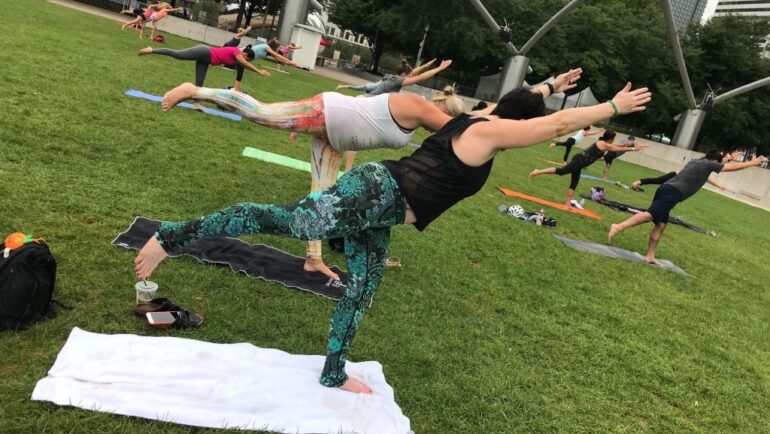
You may ask yourself what happened after Virabhadra’s murderous revenge on behalf of Shiva?
A morsel of a moral in the story
Of course there is always a morsel of a moral…
Never known any folk lore to end this simply. This one doesn’t either.
Shiva arrived at Daksha’s palace to check out Virabhadra’s handiwork. He absorbed Virabhadra back into his own form, and as this happened, his anger was replaced with deep sorrow for the loss of his wife, Sati.
As he looked at the bloody work of his warrior, his sorrow turned into compassion. All this senseless death, he could not bring his wife back, but he could bring back Daksha. Which he did, cos he is the Lord Shiva.
The now alive Daksha bowed in awe and humility to Shiva. All one happy family, except Sati.
We practice Virabhadrasana I, II and III not to honor the practice of violence, but to remind ourselves every day, we must do battle with our own ignorance and ego.
We become spiritual warriors, for the sake of our heart and soul. And that despite all the problems our ego gives us, we must forgive our ego for being selfish. The battle will continue until our heart rules our world, and prideful ego learns to be humble. There is the moral in this story of the warrior asanas.
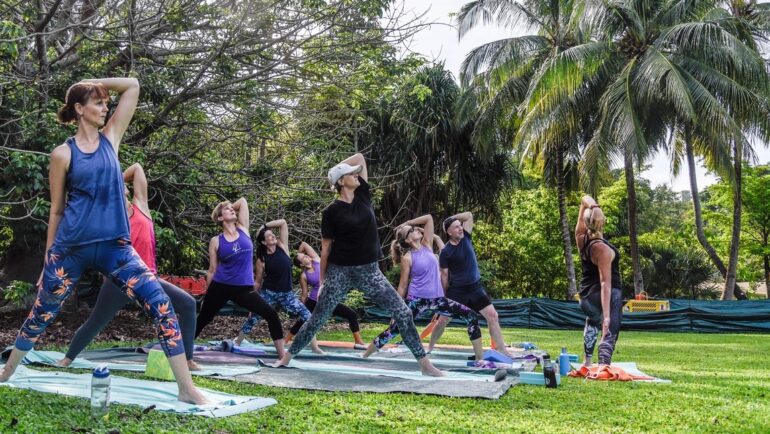

Lee Carsley is the WanderingyogiLee. Teacher of yoga and meditation, she now uses her energy gifts helping you become the most aum-some you can be Follow Lee on Instagram – wanderingyogilee


